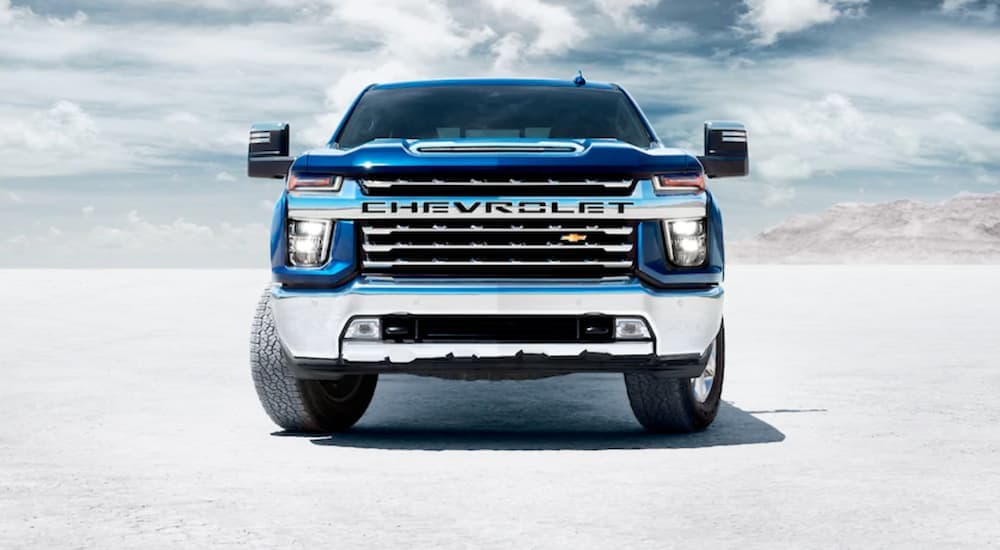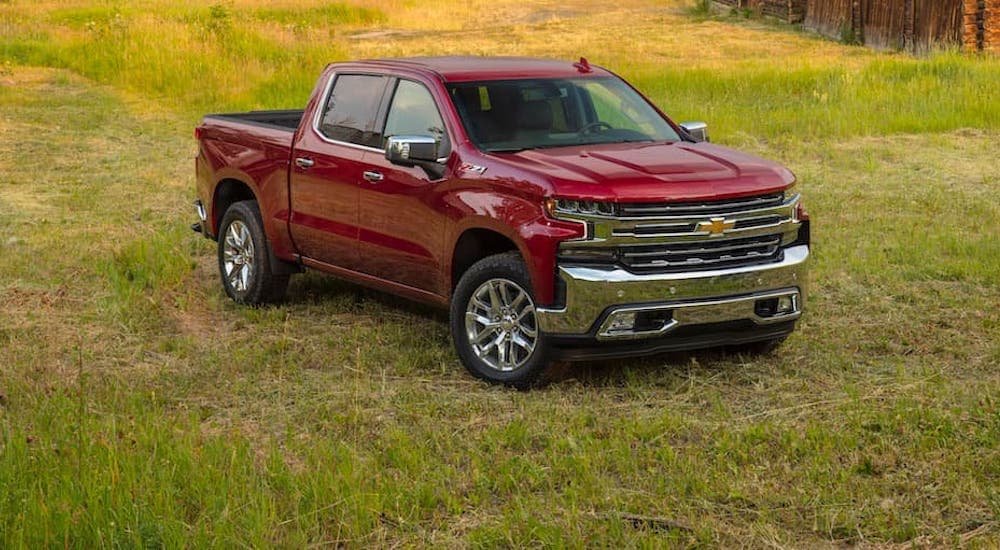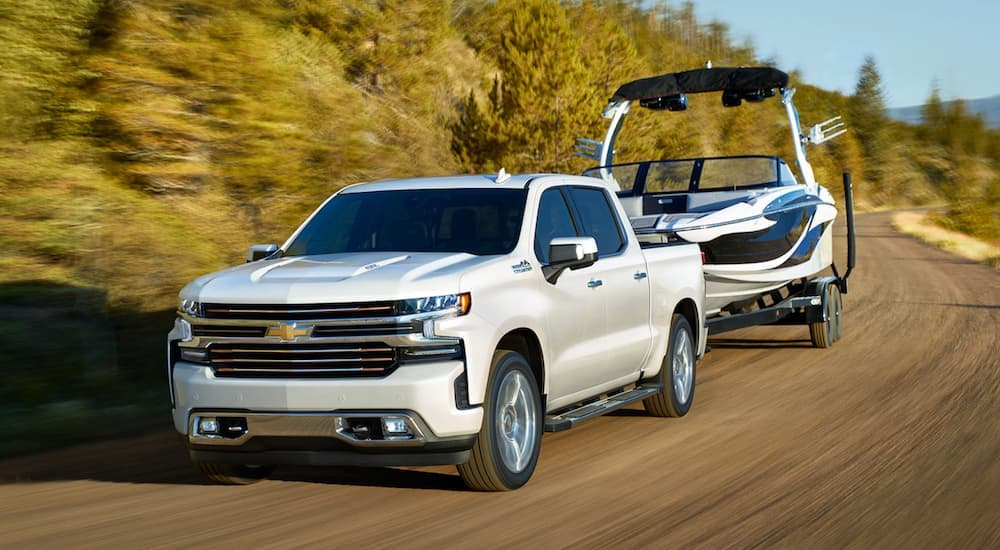Hunting for a used truck, or does the idea of a certified pre-owned Chevy Silverado have you typing search terms into google on your lunch hour? If you’re not familiar with the concept, Certified Pre-Owned (CPO) cars and trucks are a cut above typical used vehicles. They’re subjected to a battery of factory-mandated inspections before earning certification, and that attention to detail means good things for CPO buyers.
First off, Chevy’s GM Certified program requires every potential CPO vehicle to undergo a 172-point inspection. Not one inch of the vehicle is overlooked, so by the time it hits the dealer’s lot wearing a CPO badge, you’re essentially guaranteed a vehicle that’s in near-perfect condition. It’s surprising that so many buyers still aren’t familiar with the benefits of buying a CPO car, especially if shopping used is anxiety-provoking.
CPO cars and trucks come with tons of owner perks, including more factory warranty coverage and a handful of trial subscriptions to enhance infotainment and convenience features. But hands down, the most beneficial quality all CPO cars possess is they’ve passed an incredibly detailed mechanical inspection with flying colors. What’s involved in a 172-point inspection?
Step One: Vehicle History Check
All prospective CPO vehicles are inspected by authorized Chevy technicians within a Chevrolet certified service center. The first step is investigating the vehicle’s history for any title-related issues. The technician will pull a CARFAX report and determine if the car has a “clean” title. Was it involved in an accident? Does it have a salvage title? Are there any open recalls? Was the warranty voided for any reason?
If the vehicle title is clear, the next step is inspecting it for any aftermarket additions/modifications. If it’s a Silverado, did the previous owner install an aftermarket lift kit or modify the exhaust in any way? While Chevy doesn’t ban all non-factory upgrades, the type of equipment and quality of install are key considerations. For example, if an owner modified the engine or electrical system with performance equipment that could accelerate wear and tear, the vehicle is deemed ineligible for certification.
The technician will also use this first level of inspection to determine whether there are open trouble codes (e.g., illuminated warning lights). The vehicle is hooked up to a diagnostic machine, and tests are run to see what, if any, mechanical issues are present. Also, a quick check of the odometer determines both eligibility and whether any factory warranty time remains.

Step Two: Maintenance and Detailing
Next up, technicians will begin a thorough mechanical inspection, beginning with the engine oil and filter, both of which are changed if necessary. The air and cabin filters, as well as all hoses, clamps, and belts, are inspected for excess wear and replaced/repaired as needed. The battery is checked, and all connections are cleaned and secured. All vehicle fluids are inspected, topped off, or flushed and replaced if necessary.
Tires and brake pads are carefully inspected next. All tires must have a minimum tread depth of 5/32nds, and the tires must be the same brand and size. Brake pads are also checked and replaced if they’ve worn down past the minimum thickness. If the brake pads are deemed worn and in need of replacement, the brake shoes are also carefully inspected for excess wear.
After the maintenance overview, the vehicle is then thoroughly detailed to showroom condition. Every inch of the vehicle’s interior and exterior are deep cleaned, including the seating surfaces, floor mats, carpet, and headliner. All trim panels are cleaned and conditioned, and even the trunk is thoroughly cleaned and vacuumed. Any unusual/lingering odors are also eliminated.
On the exterior, the vehicle is inspected for dings/dents, and all surface chips and scratches are reconditioned. The vehicle is washed and waxed, and all stains or tar/road debris is removed. Once the detail is complete, it’s not unusual for these spiffy CPO vehicles to resemble their more expensive new counterparts. The goal is to bring every CPO car back to near-new condition.
Step Three: Road Test and Functional Testing
A key component to GM’s 172-point inspection are item numbers 37 through 70 – the road test. It’s during this phase that the vehicle is put to its paces. The engine is inspected at start-up, and technicians pay attention to idle quality, engine sound, and the quality of acceleration. The transmission is shifted through the entire gearbox to ensure no defects or damage is present.
While on the road, the vehicle is evaluated for overall stability. Characteristics like alignment, brake/stopping quality, and evidence of wind noise are all tested and inspected. Also, the road test reveals any vibrations, knocking, squeaks, or rattles that might indicate a larger mechanical issue. Steering is also checked for alignment. Other major components, such as hydraulic lines, suspensions, shocks, axles, driveshafts,
Inside the vehicle, inspectors will test the wipers, speedometer/odometer, and all lights (e.g., headlights, fog lights, interior lights, turn signals). Cruise control is tested, along with the mirrors and defrosters. If the vehicle has traction control, all-wheel drive, or four-wheel drive, all systems and drive trains are checked to ensure they’re in great mechanical condition. The radio and infotainment systems are also inspected.
Technicians pay careful attention to the vehicle’s airbags and other safety equipment, including seat belts and the parking brake. Part of the inspection includes confirming none of the airbags have been previously deployed. Child safety locks are checked, as are the fuel door, spare tire, and the vehicle’s alarm system. The key fobs are checked, as are remote start systems.
Landing on the Dealer’s Lot
Not all 172 points apply to every car. For example, there are points for convertible tops, running boards, and sunroofs, which of course, not all vehicles have, but overall, GM has created a comprehensive inspection checklist that must be used to evaluate every CPO candidate vehicle. Any body style or configuration is eligible for CPO certification, so GM’s comprehensive checklist helps dealers/technicians stay on task and leave no stone unturned.
Nary a cup holder is missed during the CPO inspection, which means buyers receive a vehicle on which every millimeter of body panels, every patch of interior carpet, and each sound system speaker is carefully tested, repaired (if needed), and restored to near new condition. The inspection form includes a spot for three dealership professionals – the certified technician, the service manager, and the used vehicle manager – to sign off that the vehicle has passed.
It’s serious business certifying General Motors vehicles. This is great news for Chevy Silverado buyers looking for a little extra reassurance before signing on the dotted line. The same holds true for any CPO vehicle, whether it’s an entry-level Spark hatchback or a fully-loaded Suburban. The consistency with which these inspections are conducted creates little room for error, which is why when you see a CPO badge, it’s as close to a quality guarantee as you’ll find for any used car.
If a used car or truck is in your plans, take a closer look at your local dealer’s CPO inventory. Not only will you enjoy more cushy owner perks like free SiriusXM satellite radio, but you can confidently drive off the lot knowing your new (to you) car is as close to factory new as you can get without paying full price. Not a bad deal.



